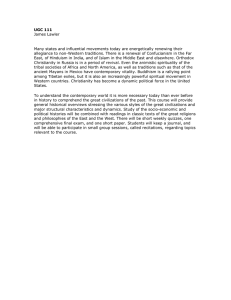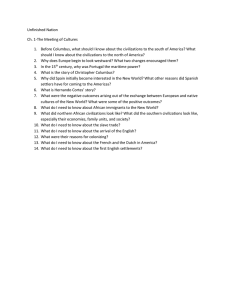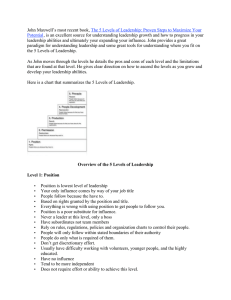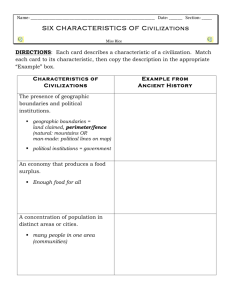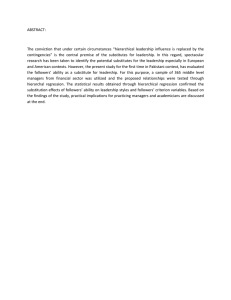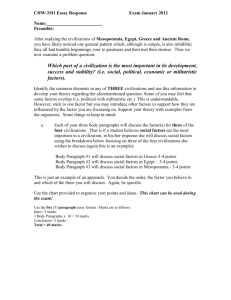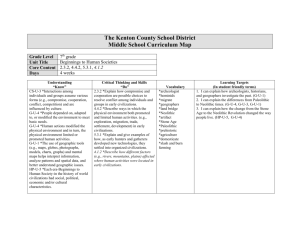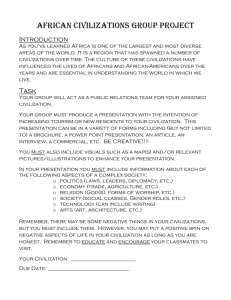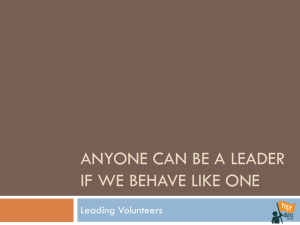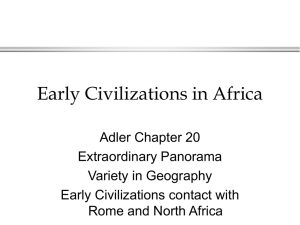Lesson One: History and Definition of Leadership
advertisement
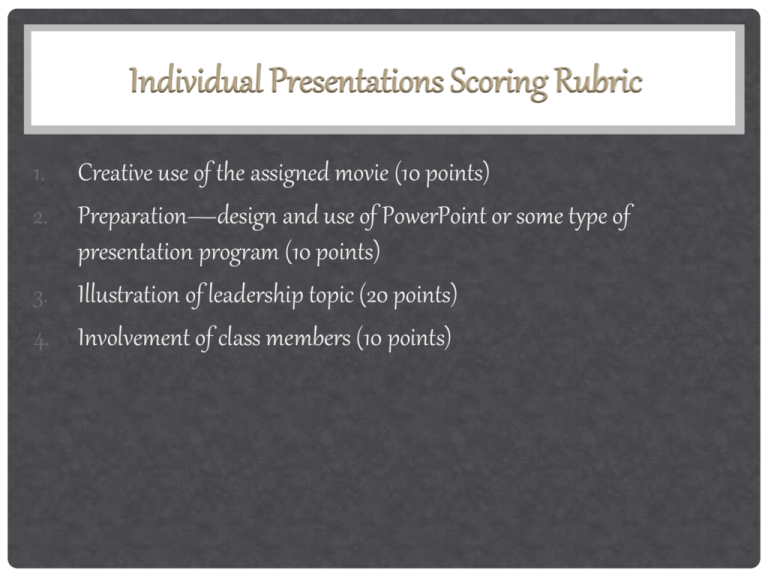
Individual Presentations Scoring Rubric 1. 2. Creative use of the assigned movie (10 points) Preparation—design and use of PowerPoint or some type of presentation program (10 points) 3. Illustration of leadership topic (20 points) 4. Involvement of class members (10 points) Lesson One: History and Definition of Leadership “Give a man a fish and you feed him for a day; teach him how to fish and you feed him for a lifetime.”—L A O T Z U 1. Why is understanding the history of leadership important? 1. Understanding leadership of an era to understand how and why events and societal development happened. 2. We can look at the past based on culture and the structure of a society. • • Seek to learn from the lessons of the past. Apply what is most applicable. 2. When Did Leadership Begin? 1. Leadership has been studied since the earliest civilizations. • Humans have ALWAYS organized themselves with some type of structure. • • • • Mayans & Aztecs Great Wall of China Moses and Hebrews Ancient Pygmy societies. 3. How Did Leadership Begin? 1. Having an effective leader was critical for survival for early civilizations. • Tribes and nomadic groups. 2. Qualifications based on skilled, strength, size, agility, knowledge. • Usually male. • Existed since the beginning of mankind. 4. What are the three historical types of leadership? A. Leader-centric. – more of a fixture- kings and queens. – they were born. – blood lines do not always make good leaders. – men were primary in control of government, business, and family units. – Citizens simply followed directions caused segregation of social classes. 4. What are the three historical types of leadership? A. Follower-centric. • Because of technology, more workers needed. • Followers wanted to regain control. • By late 1800s, ideas to increase worker productivity and boost revenue. • Unwilling to give up total control and give power to their followers. • Leaders discovered that increasing the responsibility of workers did in fact increase productivity. • 1920s-when supervisors gave personal attention to workers, satisfaction increased. 4. What are the three historical types of leadership? C. Situational-centric. – By the 1970s, a growing workforce were turning leadership over to groups, committees, and key employees. – Focus on flexibility and recognized that leadership can be seen and described with many different models in mind. – Not always one best way to lead all the time. Defining Leadership “Lives of great men all remind us, we make our lives sublime. And, departing, leave behind us, footprints in the sands of time.” -Henry Wadsworth Longfellow 5. What is Leadership? • Leadership is a complex discipline. • The best way to study leadership is by looking at popular and most accepted definitions by well-known leaders. • Various definitions help appreciate a multitude of factors that affect leadership. • No one, single “correct” definition. • Our definition: Demonstrated ability to influence others toward a goal.” 6. Is Leadership a Science or an Art? • Leadership is a field of scholarly inquiry, as well as an art. • 8,000 cited studies. • You do not have to be an expert to be a good leader. Studying the research will help in giving leaders insight. • “Results” & “Effectiveness” describe impact of leadership. 7. Leadership vs. Management—A Difference? • Many distinctions between managers and leaders. • “Management” = efficiency, process, regulations • “Leadership” = risk, creativity, vision • Leadership: “Doing the right things” vs. Management: “Doing things right.” • Leaders can be managers, and managers can become good leaders. • Shepherds and sheepherders. 8. Are Leaders Born or Made? • You develop into a leader by acquiring traits, attributes, and experiences over a period of time. • Good leaders are made, not born! • The best leaders are continually working and studying to improve their leadership skills. • Consider “Leadership” as a “Work in Progress.” Case 1a : Return of the Legends -How do you lead? • Napoleon Bonaparte – Dictatorial/militaristic • John F. Kennedy – Council/democratic • Mahatma Gandhi – Example to follow Case 1b: Bridge Engineer • Tom Davis is a classic “Worker Bee” upgraded to management. • He hates it!!! • Now he’s miserable. • What do you do?


